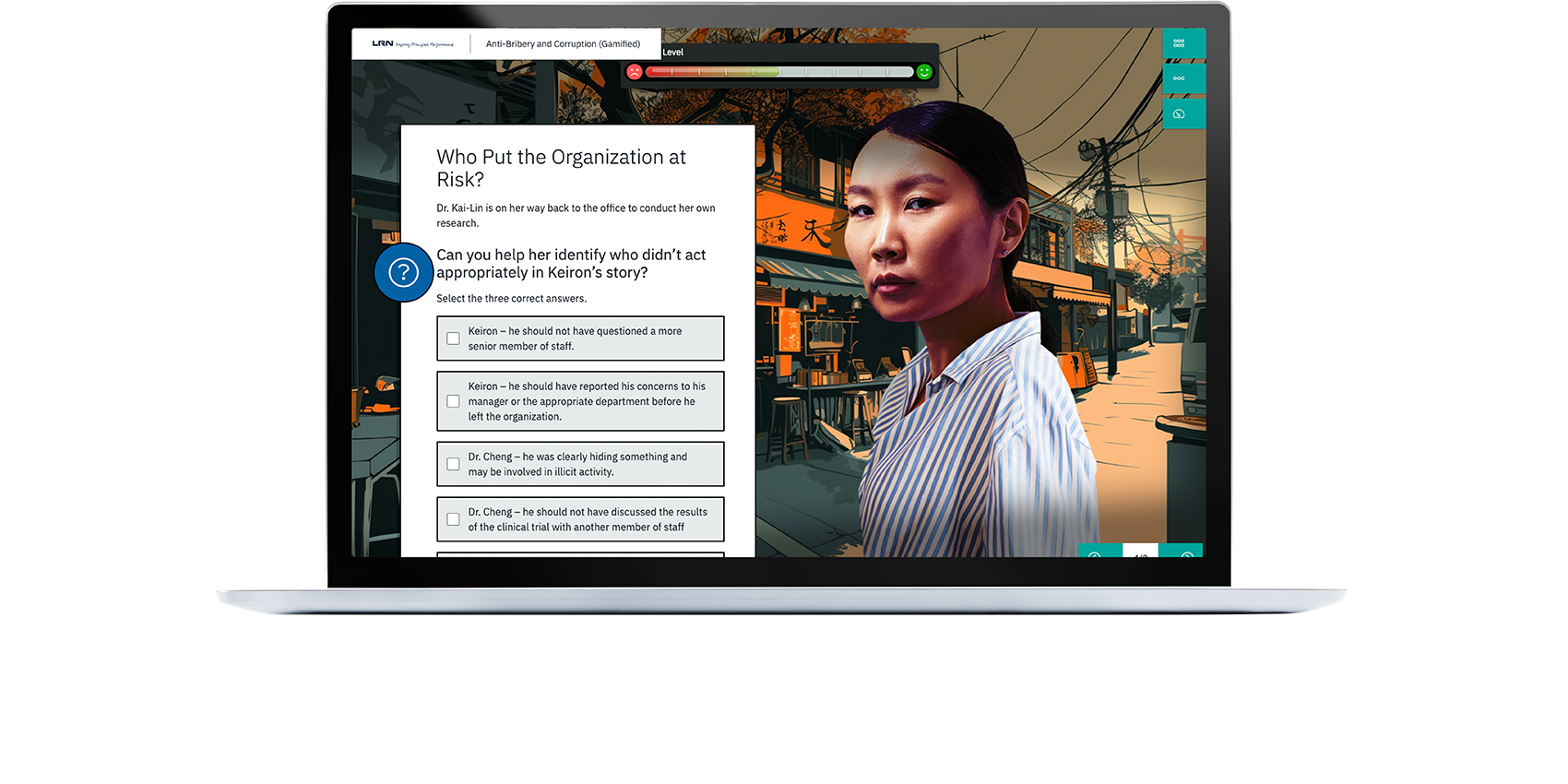Adaptive learning has become a bit of a buzzword in the adult learning sphere, and it’s no surprise why. In an era of personalized news feeds and technology that learns about us and adapts, it’s no wonder that we’ve come to expect our corporate training to adapt to us as well. We’re limited in time and want information that’s to-the-point. But does adaptive learning fully deliver on those needs?
For some time, instructional designers have been working on developing learning content that better communicates why learners are taking particular training courses so they can better engage with it. Employees want learning experiences that are tailored to their role, feel relevant, and can even account for what they already know. When it comes to ethics and compliance training, getting the right content to learners—one of the main talking points around adaptive learning—is important. But you have to know your audience and what risk looks like for them in order to deliver a truly effective learning experience. So, let’s dig into what adaptive learning really is and whether it’s worth the hype.
What is adaptive learning?
As the name implies, adaptive learning isn’t a one-size-fits-all approach to learning. Instead of delivering the same content to every learner in your audience, adaptive learning focuses on understanding the nuances of your learners and adapting the content to them during training. Information adjusts based on how a learner identifies themselves or how much they already know about a topic. As a result, your audience will likely get a variety of learning experiences depending on their knowledge and skillset.
Adaptive learning uses a standard set of features to create these varied experiences:
- The profiling feature lets learners select their role, location, department, and other professional details to then adapt the course content that they see to their profile.
- Test-out or test-down features minimize time spent in training by filtering out content that learners already know. To start, learners take an assessment as a gateway to the content. If they already know and can apply the key concepts—and can prove it—then that learning outcome has been met. It’s important to note that test-out/test-down questions must be carefully written to ensure they measure the desired outcomes. There’s a lot at stake with E&C topics, so answers should require critical thinking and not be too obvious.
- A test-up feature gives learners more advanced content, moving them to the next level of competency, for every assessment question they answer correctly. This type of feature might not fit certain E&C topics (What would an advanced anti-bribery competency look like?) but for competencies like ethical leadership, principled decision-making, or nurturing inclusion there’s value in opportunities to advance competency and measure impact.
Managing the risks of adaptive learning for E&C training
Adaptive learning is a powerful tool worthy of the buzz, but it should be applied intentionally after going through a robust, learner-centered design process. There are three reasons care is needed when implementing adaptive learning:
- It runs the risk of omitting crucial E&C information. When you vary the content you put in front of learners, there’s almost always a risk that the learning experience won’t deliver key information to someone who needs it. That gap puts your E&C team and wider organization at risk and is why a thorough analysis of audience and desired behaviors is needed to understand how the learning experience will support the objectives. Start by mapping outcomes or behaviors to types of learners and their potential risk—then align sets of assessment questions and content to those buckets.
- It can make learning experiences longer. LRN has developed course designs that adapt content in real time depending on the learner’s selections, but we’ve ultimately moved away from it in most cases because we've found that courses get longer and learners really want their training to get right to the point. They want to know that the content in front of them is exactly what they need, without excess interaction or storylines, because we’ve considered what they need. That’s why we’re really focused right now on delivering microlearning experiences—quick, easily accessible learning when and where employees need it—to help your content resonate more directly with learners and feel more digestible.
- It’s more important to repeat concepts in various formats over time. Adaptive learning can be so focused on whittling down content that we ignore the need for repetition—which actually aids learner retention. Unless your learners are using E&C information on a regular basis, they’re not likely to remember it—even if the data showed they were fully competent during training. There's something to be said for getting the same concepts in front of learners in multiple ways, provided that the repetition is paced effectively. Designing a microlearning curriculum, using bite-size and just-in-time approaches to learning, better increases retention of and ability to apply training material.
Why you need microlearning and adaptive learning in your strategy
A big focus of ethics and compliance training is making sure that learners get relevant, relatable content based on their risk level. Because adaptive learning is an approach that gets the right content to learners, it makes for a compelling learning strategy. But in order to developing effective E&C training in today’s attention economy, it’s best to combine adaptive learning with microlearning as a complete strategy.
No one has time for long training anymore, and it’s not the most effective way to change behavior. Turning your training material into discreet objectives and engaging, short-form content will better serve our larger societal habits of seeking instant access to information and referring back to it when we need it. If you haven’t yet done so, consider making a microlearning strategy your next E&C training goal. If you can support the just-in-time need for learning, your material will better resonate with learners—no matter the format. (By the way, you can request a demo of LRN's newly designed microlearning content for a sample of what it looks like in practice.)
The best part is that you can weave in elements of adaptive learning to this strategy. Profiler and testing features can help you figure out who needs that microlearning content, be more targeted with training, and provide personalized learning options tailored to an employee’s role, geographic location, or level of seniority.
The key takeaway
No matter the approach you take to learning design, you need to have a deep understanding of your audience and what outcomes they need to achieve with the content they’re given. Determine the key takeaways for them and design for those objectives. Good learning experiences, whether adaptive learning or microlearning, require great learning design—not just a feature add-on, but an intentional approach to using time effectively and communicating information so it sticks. To get a better sense of these approaches in action, request a demo of LRN's new microlearning content today.


